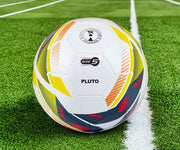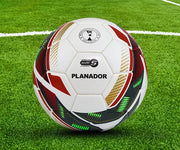Every soccer player knows the thrill of stepping onto the pitch, but with that excitement also comes the risk of soccer injuries. From rolled ankles during a sprint to painful hamstring pulls in the middle of a match, these setbacks can strike anyone, no matter the level of play.
Injuries are more than just physical pain, they can sideline you for weeks, break your rhythm, and even impact your love for the game. For many players, missing a big match or training session hurts just as much as the injury itself. That is why knowing how to recognise, treat, and prevent soccer injuries matters so much.
Whether you play casually on weekends, represent your local club, or watch from the sidelines, this guide will walk you through the most common soccer injuries and how to deal with them properly.
Most Common Soccer Injuries that Can Sideline for Months
1. Ankle Sprains
Ankle sprains are among the top injuries in football. They happen when the ligaments around the ankle stretch or tear. The three main types are lateral sprains, medial sprains, and syndesmotic sprains.
Diagnosis and treatment: Players often feel swelling, pain, and instability when walking. Mild sprains can recover with rest, ice, compression, and elevation, while severe sprains may require physiotherapy.
Prevention tips: Strengthen ankle muscles with balance drills, wear supportive boots, stretch before games, and avoid uneven playing surfaces.
2. Hamstring Injuries in Football
Hamstring injuries occur during fast sprints, sudden stops, or overstretching. They are one of the most frustrating soccer injuries because they often return if not managed properly.
Diagnosis and treatment: Symptoms include sharp pain in the back of the thigh, swelling, or bruising. Recovery includes rest, ice, and gentle stretching. Later, hamstring injury exercises for recovery, like bridges and controlled leg curls,help restore strength.
Prevention tips: Warm up with dynamic stretches, focus on strength training for the hamstrings and glutes, and avoid overloading the muscles with fatigue.
3. Common Knee Injuries in Soccer
The knee is under constant pressure in football, especially with sharp turns and sudden landings. Injuries to the ACL, MCL, or meniscus are common.
Diagnosis and treatment: Players may feel a pop, instability, or swelling. Depending on severity, recovery may involve physiotherapy or surgery.
Prevention tips: Build strong quads and hamstrings, wear supportive boots, and practise proper landing mechanics. Focused exercises for balance and agility also reduce the chance of knee damage.
4. Calf Strains
Calf strains occur when the muscle is overstretched or torn during running or jumping. Many players describe a snapping sensation followed by pain.
Diagnosis and treatment: Mild strains cause tightness, while severe strains lead to swelling and bruising. Treatment involves rest, stretching, and a slow return to activity.
Prevention tips: Never skip calf warm-ups, include calf raises in your training, and keep hydration levels up to avoid cramps.
5. Concussions
A concussion is a brain injury caused by a direct blow to the head or collision with another player.
Diagnosis and treatment: Symptoms may include dizziness, headaches, blurred vision, or confusion. Medical evaluation is essential. Players need total rest, including limiting screen time and physical activity, before returning to the field.
Prevention tips: Follow the rules of safe heading, communicate on the pitch to avoid clashes, and always prioritise fair play.
6. Achilles Tendonitis
Achilles tendonitis develops through overuse of the tendon connecting the heel to the calf. It usually starts with stiffness in the morning or after long training sessions.
Diagnosis and treatment: Early treatment includes rest, ice, stretching, and supportive footwear. Untreated cases may lead to a tendon rupture that requires surgery.
Prevention tips: Add eccentric calf exercises, avoid sudden increases in training loads, and wear boots that fit well.
7. Clavicle Fractures
The collarbone often breaks during heavy falls or collisions with other players.
Diagnosis and treatment: Symptoms include shoulder pain, swelling, and difficulty lifting the arm. Most cases heal with a sling and physiotherapy, while severe ones may require surgery.
Prevention tips: Improve overall strength, practise safe falling techniques, and wear protective gear during training.
8. Kneecap Bursitis
This injury comes from inflammation of the bursa around the knee joint, often caused by kneeling on hard surfaces or taking direct hits.
Diagnosis and treatment: Swelling at the front of the knee, tenderness, and difficulty bending are common. Rest, ice, and physiotherapy usually work well.
Prevention tips: Avoid repetitive kneeling, strengthen thigh muscles, and always stretch before matches.
9. Wrist Fractures
Goalkeepers are most prone to wrist fractures while making saves or falling onto their hands.
Diagnosis and treatment: Swelling, tenderness, and limited movement are signs. Treatment may involve casting, rest, and gradual rehab.
Prevention tips: Wrist strengthening, proper catching techniques, and protective gloves can help reduce risk.
How to Prevent Soccer Injuries
Learning how to prevent soccer injuries is just as important as treating them. A few small changes in routine can protect your body throughout the season.
-
Warm up with jogging, dynamic stretches, and ball drills before matches.
-
Cool down with light jogging and static stretches after playing.
-
Strengthen key muscles in the lower body with squats, lunges, and calf raises.
-
Wear boots that suit your playing surface and shin guards that fit well.
-
Stay hydrated and fuel your body with proper nutrition.
-
Rest when you feel pain or fatigue instead of pushing through it.
Conclusion
Soccer injuries are part of the game, but smart training, early treatment, and consistent prevention can keep you playing longer. Listen to your body, prepare well, and protect your love for the sport.
FAQs
Q1: What injuries are most common in soccer?
A: The most common soccer injuries happen in the lower body. These include ankle sprains, hamstring strains, and knee injuries like ACL or meniscus tears. Muscle strains and calf pulls are also frequent, especially in players who train or play without proper warm-up.
Q2:What’s the worst injury in soccer?
A: One of the worst injuries in soccer is a torn ACL (anterior cruciate ligament). It usually requires surgery and many months of recovery. A severe concussion or a compound fracture can also be very serious because they affect long-term health and may even end a career if not treated properly.
Q3: What are the 4 major injuries?
A: The four major soccer injuries that players and coaches watch out for are:
-
Ankle sprains
-
Hamstring injuries
-
Knee ligament tears (like ACL or MCL)
-
Concussions
These injuries not only cause pain but can also sideline players for weeks or months if ignored.







